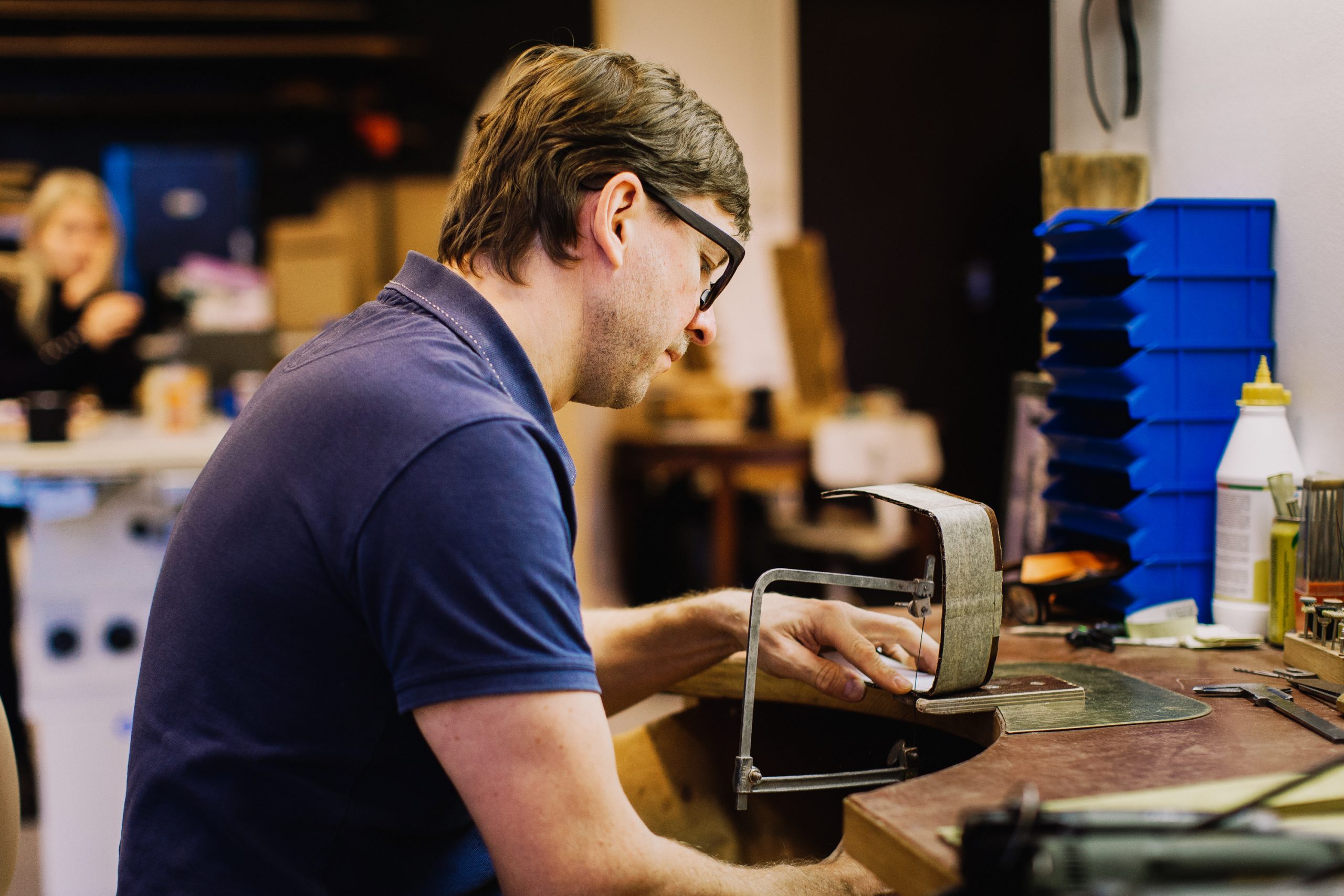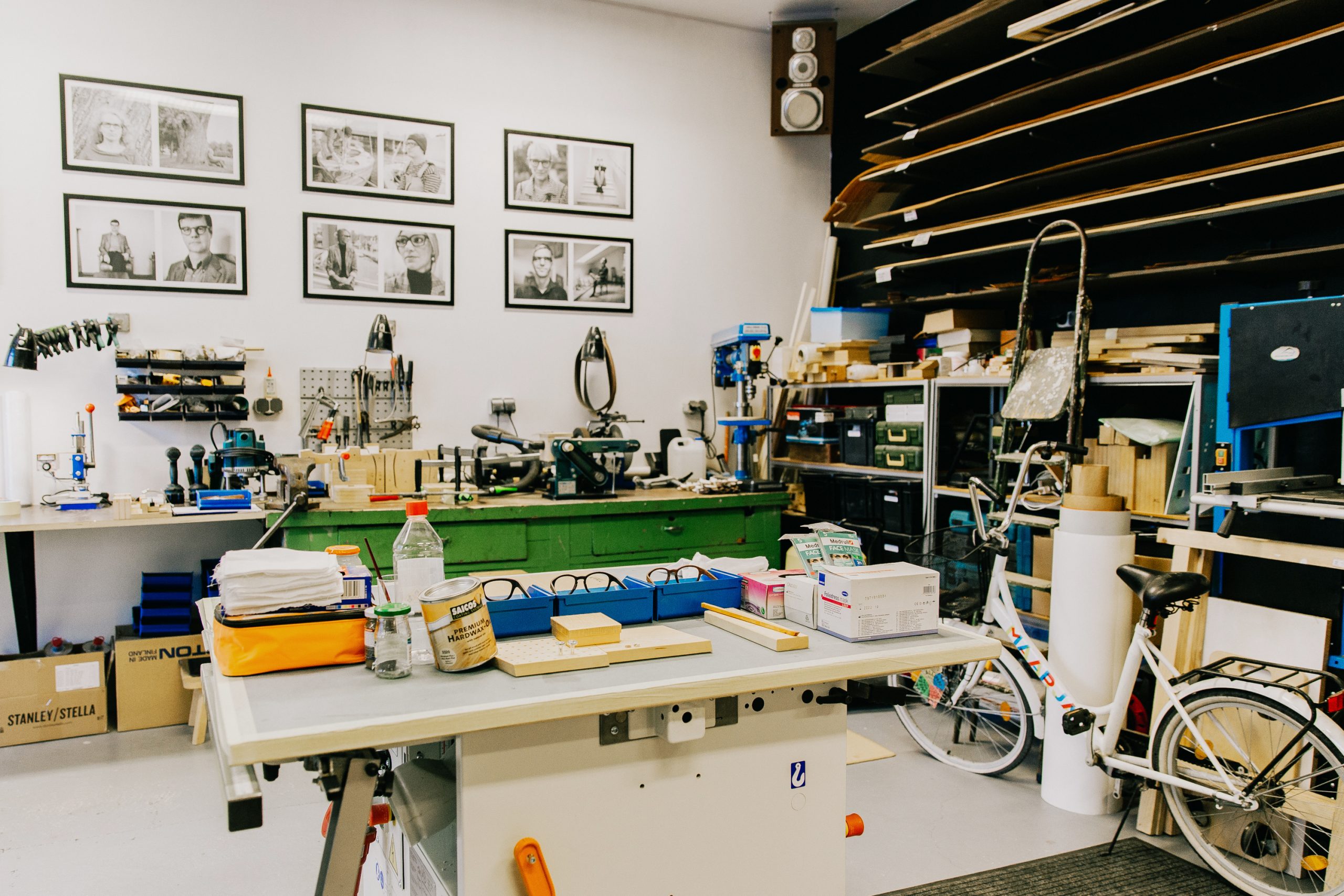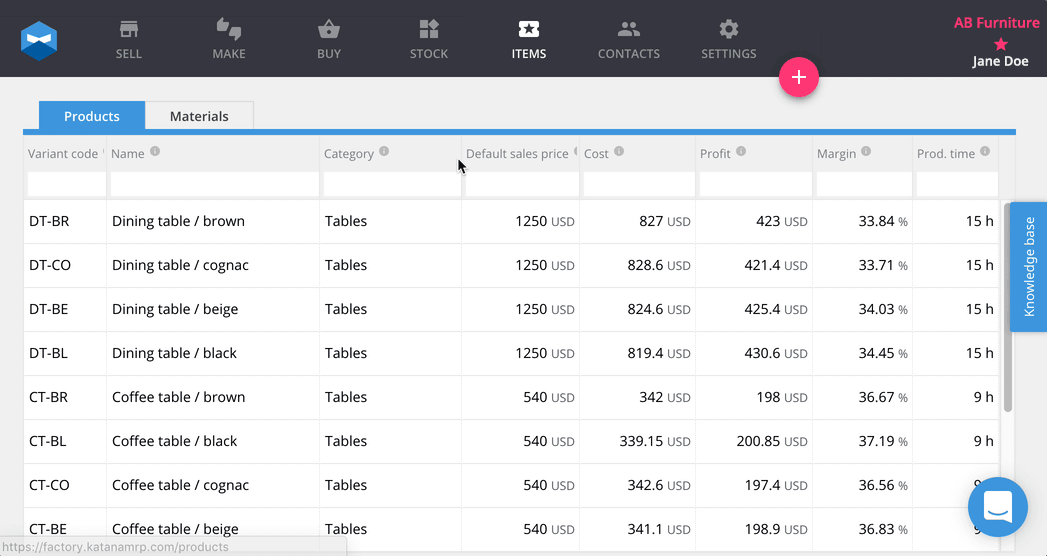Craft production: How to make it in the craft business
Craft production is a manufacturing technique that goes back to ancient times. Here we explore craft production and how to be a successful craft worker.
Team Katana

Craft production has been around since ancient times and still plays a crucial role in the manufacturing industry. In this article, we’ve investigated what is craft production, steps you can follow to become a skilled craft worker, and the appropriate automation to help your business thrive.
When we think of manufacturing, we envision sterilized factories and heartless machines, forever pumping out cheap, unreliable, and tacky products at the lowest possible cost.
Maybe this is a fair stereotype for the manufacturing industry in general, but we often forget about the artisans and humble workshop owners, who are still making things by hand, using techniques that are thousands of years old.
These manufacturers inhabit an area in the industry, one which has been the cornerstone of culture for societies and is making a comeback according to our manufacturing trends and predictions.
Manufacturers working in craft production play an important role because they make unique and difficult-to-replicate products that enrich our culture, either by adding to it or reflecting it.
Take, for example, Rebel Nell, featured in our 19 best Shopify stores article, who teaches disenfranchised women how to make beauty accessories using graffitied material from the streets of Detroit. They can then build up their jewelry inventory to sell them later.
That’s quite a literal example of how craft production enriches culture, but the point still stands.
Craft production has a long history, and today many people are working in the field, either as hobbyists, part-time, or even full-time skilled crafter workers.
And that’s why we’ve decided to delve into the world of craft production, from its history to how you can build a successful craft manufacturing business.
So, let’s get to it!
What is craft production?

The craft production definition is the manufacturing process of making products, one by one, with or without the aid of tools, usually in a job shop manufacturing setting. Craft production was the most common method of manufacturing pre-industrialization, such as when making pottery by hand.
Regardless of the product, craft production’s finished goods are unique, tell a story, and (should be) made of extremely high quality, which is the biggest appeal of purchasing something from a craft manufacturer.
However, even though customers are interested in these unique items, it does come with the disadvantage of being harder to repair compared to the mass-produced, cheaper alternatives, which are composed of identical, replaceable parts, that are easier and cheaper to fix.
The other thing about craft production is that it’s reliant on a highly skilled craft worker, of which we’re currently experiencing a shortage. Training for anyone working in craft production can be intensive and delivered through apprenticeships, workshops, lectures, or just a simple hands-on approach.
Even though large-scale manufacturers rely on mass production when making their goods, craft production is still practiced around the world and is a tried and true method when it comes to making furniture, cabinetry, and other woodworking trades.
And before we continue, let’s quickly look at the history of craft production as it is a diverse one. And the reason for switching from craft production to mass production may surprise you.
The history of craft production

Craft production truly began with technological advancements in the world of agriculture. As institutions were able to harvest more food with less reliance on a large labor force, this allowed members of a population to specialize in craft production.
For example, in ancient Mesopotamia, the temple and the palace were able to invest their food surplus into crafts production, open markets to sell these products, and even establish long-distance trade routes.
In turn, this would also lead to other technological developments as metalsmiths (a highly specialized and indispensable craft trade) could make better tools for farming, transportation, and warfare.
Early forms of craft production have given archaeologists a better understanding of how ancient civilizations lived, by the equipment they produced, or the stories/patterns imprinted onto their ceramics.
In more recent times, Womack, Jones, and Roos argued in their book The Machine That Changed the World, that automobiles shifted the focus from craft production to mass production, as early automobiles were craft produced.
Meaning that each vehicle was unique, and any replacements for one would have to be built from scratch or even use bespoke manufacturing to repair, making automobiles extremely expensive.
And that’s the surface level of the history of craft production, but how does craft production fair in the modern era?
PRO TIP: Inventory management can be a hassle without the proper tools. That’s why we’ve put together a free inventory spreadsheet template for you to use, which can then later be uploaded to cloud inventory software once you’re ready to upgrade your systems.
The craft industry now

As we quickly touched upon at the beginning of the article, the craft industry is still thriving today, and not just in places that don’t have access to industrialized processes.
Craft production encompasses a variety of different products such as:
- Artisanal foods
- Baked goods
- Craft beers
- Apparel
- Textiles
- Jewelry
- Decorative arts
- Models
- Papermaking and papercraft
- Printmaking
- Woodcraft
- Toys
- Upcycled products
What makes these products distinctive is that they’re manufactured by hand and without the use of automation, such as what is seen in repetitive manufacturing or by avoiding the use of robotics.
However, that doesn’t exclude the use of manufacturing process automation. Yes, artisans and crafters still build everything by hand, but they still need to use automation to manage their business, especially when they start to expand.
And the same goes for their selling strategies too. Those working in craft production don’t have to establish long-trade routes like their ancestral crafters, now they can simply take advantage of e-commerce, which has become cheaper and easier to set up than ever before!
Take, for example, Etsy, an online marketplace specifically designed for trading handmade goods. Crafters don’t have to search for their target audience, or travel between different locations, now they can simply make a profile and start selling.
This accessibility and changing consumer trends are what are making craft production more popular in recent years.
But has led to a different challenge for crafters in the information age, deciding where to get set up online. Shopify or Etsy? Or both?
So, if you’re working in the field of craft or you’re considering turning your hobby into a business, here are our top tips for making it in craft production.
Top tips for making it in craft production

1. Get smart
One thing is being able to craft a product by hand, but being able to sell, market and run a business is an entirely different beast you’ll need to tame. Susan Brandt, of the Hobby Industry Association, says “It’s not necessary to have a business background, but if you don’t have one, [it is] necessary to read up,”
Although attending a class or workshop would be best, you can easily find texts on business management in a library or even find free resources online. Don’t rush into starting a business, make sure you have a business plan that’s been put together and well researched.
2. Research the market
Same as above really, but with more field trips! Check out craft fairs, explore the internet, investigate trade publications, and even chat with other skilled craft worker to see what their experience has been.
The purpose is to try and determine where you’ll fit in the market, and even if there’s a demand for such products.
3. Give yourself a fair price
This can be quite intimidating, as many artisans look at what competitors are charging or their own budget when deciding how much to charge for their products.
Be reasonable and charge for profit!
When you make finished goods, there are costs such as manufacturing overhead, business licenses, accountant fees, etc. Make sure these areas are paid for when calculating your cost of goods sold.
4. Marketing
Marketing is important, and with social media channels and online marketplaces, it can be relatively cheap for an artisan crafter to get exposure. However, if you truly want to be successful, make sure that you:
- Get together a mailing list
- Get your own website or blog page
- Get professional-looking photos of your products (and in the correct format in the case of Shopify image sizes)
5. Embrace some automation
We understand skilled craft workers are specialists. However, it’s hard to be perfect at everything, and that’s why it’s important to get your business automated. The idea is to implement a system that can automatically help you with your inventory management and production planning, so you can focus on crafting your products.
When looking for software to use, make sure to request a demo, so you can see it in action before making any financial commitments.
Paper Republic, a craft manufacturer who makes leather-bound journals and accessories, quickly learned that they needed software to help them manage their sales orders, production planning, and figure out how to synchronize their inventory levels with Shopify:
“We need to source raw materials, plan production, put components together, and know our real-time inventory across the entire production process.” says Jérôme, Paper Republic founder.
By adopting Katana, Paper Republic was able to:
- Improve production planning by 60%
- Differentiate between batch and custom products
- Improve inventory accuracy by 29%
- Sync stock with Shopify
Conclusion

And there we have it, an in-depth look into craft production and the steps you can follow to make sure your business stays on the road to success.
We’ve mentioned throughout the article what makes craft production so distinctive is its reliance on a skilled craft worker and the importance of making products by hand.
Yes, crafters reject the automation that larger manufacturers have installed in their factories, but that doesn’t mean crafters do everything manually.
When your business starts to grow, and it becomes apparent that organizing your business via inefficient Excel spreadsheets will do more harm than good, this is the time to consider adopting cloud inventory software like the one that is offered by Katana.
Katana Cloud Inventory Software is an all-in-one platform that’s for modern crafters, built by manufacturers, designed to help you with things such as:
Finished goods and raw materials inventory management
Experience the awesome power of automation with Katana’s unique auto-booking system, which takes available inventory, and allocates it to your open orders, so you know immediately when you can fulfill a sale or start production.
Production planning and scheduling
Don’t waste time putting together your master production schedule let Katana take care of that for you.
Production planning and scheduling are simplified with our first-come-first-serve production flow, meaning manufacturing orders are scheduled in the order they’re created. However, if you need to focus on a VIP order, our nifty drag-and-drop system will allow you to restructure the workflow, and Katana will even reorganize your inventory to fit the new workflow.

Synchronize your e-commerce and accounting software
Finally, Katana can centralize your multiple sales channels by integrating with your favorite platforms and accounting software such as Shopify, WooCommerce, QuickBooks, and Xero.
If you’re more of a visual learner, see how Katana can benefit your craft-making business below:
Why not see for yourself how Katana is a match made in heaven for any craft production business? Request a demo today to get a better understanding of the importance of having your inventory management and production planning automated.
And that’s all we have for today! If you have any questions, feel free to drop us a message below or head over to our social media channels for a chat.
And until next time, happy crafting.
Team Katana
Table of contents
Get inventory trends, news, and tips every month
Get visibility over your sales and stock
Wave goodbye to uncertainty with Katana Cloud Inventory — AI-powered for total inventory control